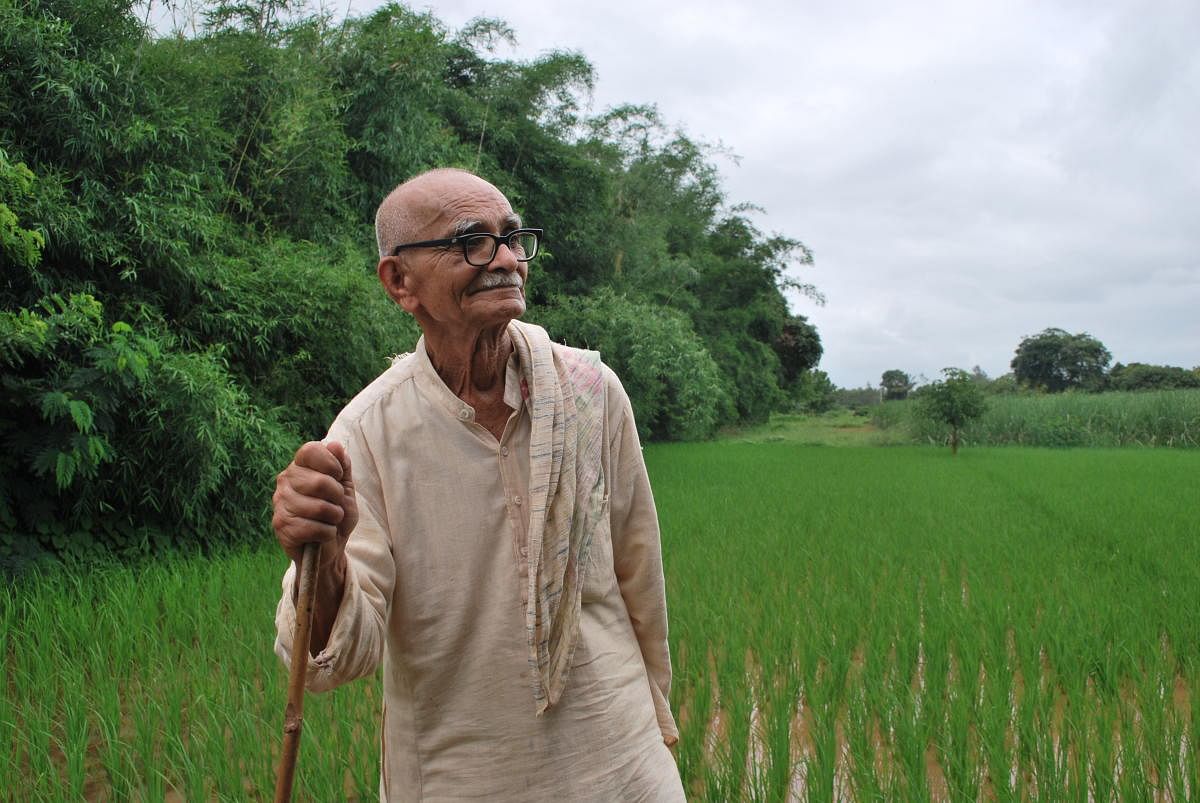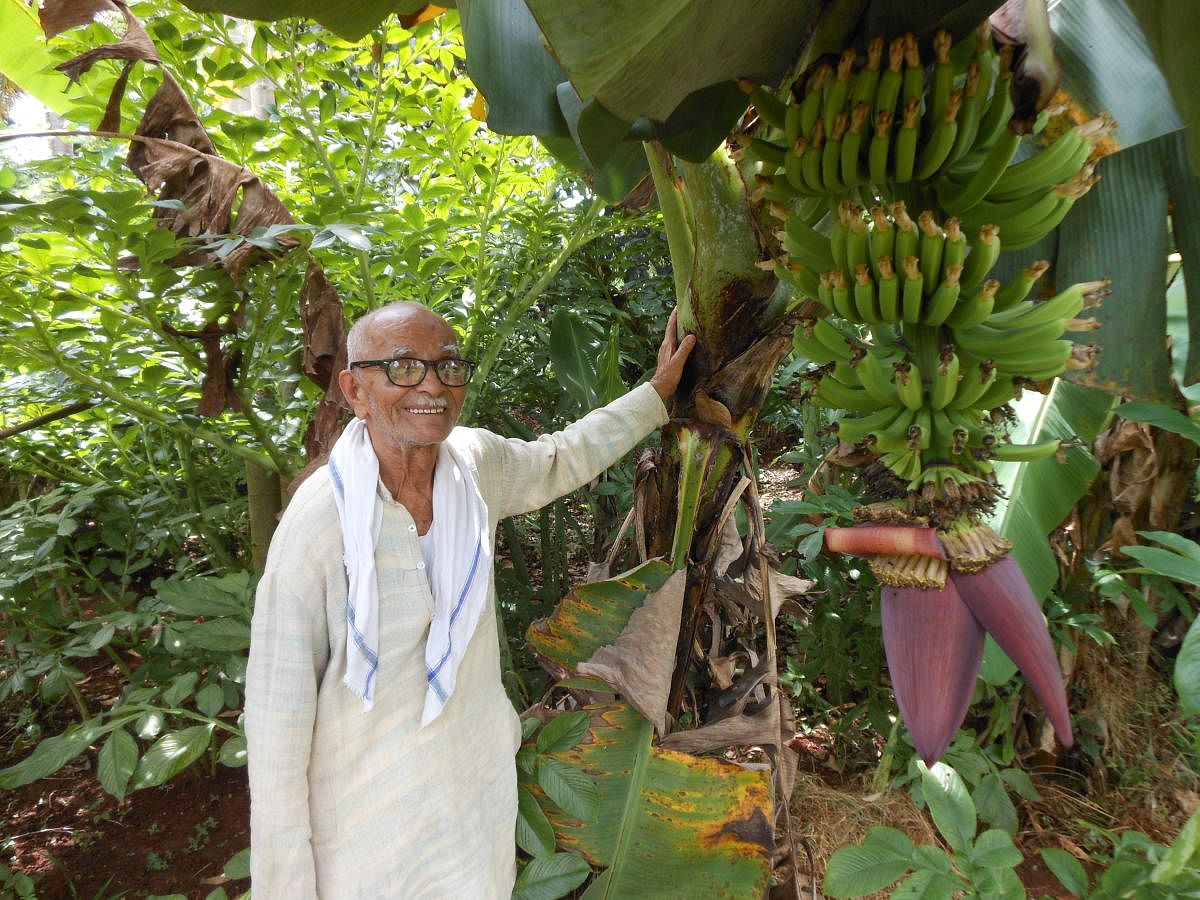
From organic farming to land reforms movement and women's empowerment, people of Belagavi have been fondly remembering the life and work of their beloved Gandhi Baba for the past two days. The younger generation is now listening to the inspiring stories linked to freedom fighter and Gandhian Sadashivrao Bhosle, who passed away on April 15.
Born on December 16, 1920 to Bapu Saheb and Savitri Bhosle, Sadashivrao joined the freedom movement when he was just 22. He participated in the Quit India movement and landed in the Yerawada jail (Pune) where he came under the influence of Gandhian ideology, which he went on to follow throughout his life.
Even though he was elected an MLA from Belagavi south (then Bombay province) in 1946 and then from Bagewadi, Sadashivrao chose to resign midterm, on the advice of Vinoba Bhave in order to propagate Gandhian thoughts.
Sadashivrao, who lived for 101 years, was not just a preacher but a man who put the teachings of the Mahatma into practice, though he never met the man. Throughout his life, he only ate one meal of vegetarian food and even gave up salt and spices. He wore only Khadi clothes that he spun himself on the Charaka.
He married Vatsala and although both of them came from affluent families, they preferred a mangalsutra made of khadi threads to solemnise the wedding. Vatsala also followed all these practices throughout her life. She died just a few months back.
Coming under the influence of the Bhoodan movement of Vinoba Bhave, Sadashivrao gave away around 24 acres of land that he had been bequeathed. Even later, he never acquired any property either for himself or his children. As his son Vinod recalls, his father never gave him and his sister any special privilege as children, as he believed in equal treatment of all and that the world was his family (Vasudaiva Kutumbakam).
Organic farming was not a buzz word when Sadashivrao worked towards promoting it. Working in the small farm purchased by his son and sometimes in farms of other villagers, Sadashivrao kept on experimenting in agriculture and sharing it with fellow villagers. He encouraged farmers in his village to give up synthetic chemical inputs that harm the ecosystem.
Sadashivrao stayed in a village and strove to uplift the community. He used to take up Gram Swachta Abhiyaan to ensure cleanliness and would solve all problems at the village-level. He never complained about the system and instead, used non-violent means to overcome societal problems. Like Gandhiji, he opposed liquor and had once, even held an Anshan (hunger strike) against setting up of a liquor shop in his village.
"He would counsel liquor addicts and try to convince them to give it up. He would never say a bad word to them or get angry. He would speak to them with love and make them take the Gandhi Shapath (vow). He would win people's heart by his perseverance," said his nephew Anil Pawashe.
Gandhi Ghar
He set up the Gandhi Ghar at Devgiri near Belagavi to propagate Gandhian principles and the Kasturba Kendra for the empowerment of women. He even used his entire freedom fighter pension amount to set up Vatsalyadham at Mudhol in Bagalkot district to help villagers. He had actively participated in the movement against misrule and corruption, led by Gandhian socialist Jayaprakash Narayan. He was jailed during emergency.
Freedom fighter Vithal Rao Yalgi remembers Sadashivrao as a selfless man who played an active role in realising the Gandhian ideals of Gram Swaraj and education to all. "He gave up all the comforts of life just to ensure that Gandhi reached every house in the village."
